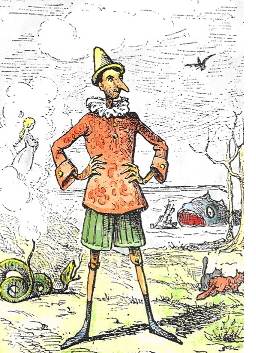
Takt time
Takt time is the rate at which customers buy a product. Takt time determines the speed at which a Lean manufacturing runs. For example, say we sell 576 units of product A. If we have a 8 hour shift, we need to make 72 units per hour, or 1.2 units per minute. We have 50 seconds per unit.
Every step in the production process must now deliver their contribution to the product in 50 seconds.
What if there’s a step that can’t deliver in 50 seconds? Then we have a bottleneck. We’ll produce and sell less than we could. We apply the 5 focusing steps to increase the bottleneck’s capacity so that they can deliver in 50 seconds or less.
What if there’s a step that can deliver in less than 50 seconds? They still deliver every 50 seconds, even if they have to slow down. If they delivered more frequently, we’d build up lots of work in process as other steps can’t use its output faster than once every 50 seconds. Or we might build unsold goods.
Slowing down? Isn’t that inefficient? Yes, but we’re not optimising the efficiency of a single step. We’re optimising the whole value stream. If a step has a lot of spare capacity, this could be used to work on another product, but only if it doesn’t endanger the delivery of the first product.
Using Visual Management, the value stream tracks actual production rate regularly. The steps won’t run perfectly as clockwork, there will always be some variation. The production rate displays allow everybody to react (speed up, slow down a bit) to keep to the takt time. The takt time works as a metronome that synchronizes musicians.
Takt time isn’t (always) the drum beat
In Theory of Constraints, the Drum-Buffer-Rope system synchronizes the speed at which each step in production runs. The “Drum Beat” is the rhythm, the steady pace at which the slowest step (the bottleneck) runs. The rest of the system works to that beat. Again, no use producing faster than the bottleneck because we’ll only create more work in process.
The two concepts are quite similar and I sometimes confuse them. There’s one clear difference:
- takt time is customer-focused, outward looking
- drum beat is bottleneck focused, inward looking
If the customer is the constraint, a base (if not outspoken) premise of Lean, takt time equals the drum beat and drum-buffer-rope implements customer pull.
Takt time in software development
What is the equivalent of takt time in software development? If you’re Microsoft, you know approximately how many copies of Microsoft Office are bought every day. You could run your disk duplication and packaging plant at this takt time. But that’s not what I want to talk about.
Takt time = the rate at which you release a new product (version) to users
How often do you put new, valuable features in the hands of your users? Every day? Every week? Every month? Every quarter? Every year?
The logic of slow takt times or how to kill all your Agile teams with one simple decision
Most teams I work with, including Agile teams, have long release cycles. Long by my standards. Some of this is under control of the development team, but the release cycle is often dictated by other concerns. Often, operational teams (systems engineers, DBAs, support) reduce the number of releases.
Operational teams are often stressed, in fire-fighting mode and jerked around as projects miss deadlines and make last-minute changes. To reduce the load and ease the pressure, they reduce the number of releases. Fewer releases means more complex and error-prone releases, as more features are batched up in one release. These releases require more effort and have more issues. Fixing and patching those issues requires more work. Business people, under pressure to generate more value faster push harder to get features out of the door. Corners get cut, features get released under the guise of fixes. More work. The logical reaction is to reduce the number of releases again. Which makes the problem even worse. And so on.
Reducing the number of releases, increasing the overhead of releasing is the perfect way to demoralise and ultimately kill any Agile team. Why should we define short iterations and releases, if it takes so long to get something in production? Why should we collaborate tightly with customers if the software is outdated by the time it gets into the hands of users? Why should we focus on business value if potentially valuable features gather dust in an endless release process? We might as well switch to waterfall.
It doesn’t have to be this way. The first step is to regain the trust of the operational teams: release on time, deliver great quality code, involve operational teams in planning and retrospectives, treat members of operational teams (who are often involved in many projects) as members of your team: listen to them and optimise the whole value stream.
Once we’ve established trust and created one team, we can start to talk about improving and going faster.





